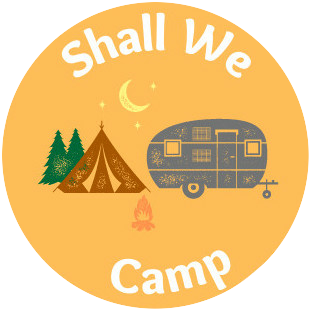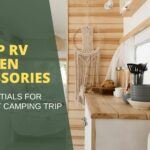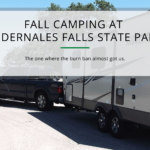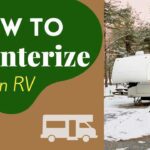Keeping food cold while camping is extremely important for both food safety and meal freshness. Improper food storage can lead to spoiled meals and potential health risks. Fortunately, with the right techniques and gear, you can easily make sure your food stays fresh and safe throughout your trip.
The last thing you want on your camping trip is spoiled food… follow these tips to keep everything fresh and safe!
In this guide, we’ll answer common questions about keeping food cold while camping, from choosing the best coolers to maximizing ice retention and alternative cooling methods.
Affiliate Disclaimer: This site contains affiliate links, which means I may earn a commission on purchases made through these links at no extra cost to you.
Table of Contents
What are some effective ways to keep food cold while camping?

1. Choose the Right Cooler
Investing in a high-quality cooler can make a huge difference in how long your food stays cold. Look for coolers with thick insulation, a tight-sealing lid, and features like bear-proof latches if you're camping in wildlife-heavy areas. Rotomolded coolers, such as YETI and RTIC, are known for superior ice retention.
2. Pre-Chill Your Cooler
Before packing your cooler, pre-chill it by storing it in a cool place or adding ice packs for a few hours. This helps lower the internal temperature, ensuring that your food stays colder for longer once packed.
3. Use Ice Blocks Instead of Ice Cubes
Ice blocks last significantly longer than ice cubes. Freeze water in large containers, such as milk jugs or water bottles, before your trip. As the ice melts, you’ll also have extra drinking water available.
4. Pack Frozen Foods
If possible, freeze meats, dairy products, and pre-cooked meals before placing them in the cooler. Frozen food acts as an additional cooling source and thaws gradually, helping to extend the life of your ice.
5. Layer and Organize Your Cooler Properly
How you pack your cooler affects how long your food stays cold. Follow these packing tips:
Place ice blocks at the bottom.
Store frozen and perishable items directly on top of the ice.
Use airtight containers to prevent water from getting into your food.
Keep frequently used items on top to minimize how long the cooler stays open.
6. Keep Your Cooler in the Shade
Direct sunlight can quickly heat up your cooler, causing ice to melt faster. Always store your cooler in a shaded area or cover it with a reflective blanket to keep it cool.
7. Limit Cooler Openings
Every time you open your cooler, warm air enters, and cold air escapes. Plan ahead by grabbing everything you need in one go and keeping drinks in a separate cooler to avoid frequent access to your food storage.
8. Use Dry Ice for Extended Trips
For longer camping trips, consider using dry ice. It keeps food frozen for an extended period and doesn’t create extra water as it melts. Be sure to handle it with gloves and store it properly to prevent damage to your cooler.
9. Try an Electric Cooler or Portable Fridge
If you’re camping with access to power, a portable electric cooler or a 12V car fridge can be a game-changer. These devices maintain a consistent temperature without the need for ice, making them ideal for longer trips.
10. Use Insulated Bags for Short-Term Cooling
For short trips or hikes away from your main campsite, insulated bags with ice packs can help keep snacks and perishable items cool without carrying an entire cooler.

How does the environment play a role in keeping food cold?
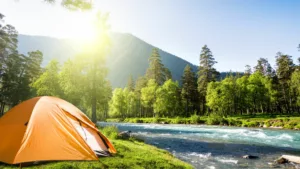
Nature itself can provide an alternative solution. When camping in cooler climates or at higher altitudes, you can take advantage of naturally low temperatures.
Placing food near a cold creek or stream serves as a natural cooling system, but you should make sure the area is secure and that the container is safe from wildlife.
Using cool rocks or the ground, which stays cold during the night, can further boost your cooling method. The key is to find areas that are naturally cool and keep your items safely stored.
What items should you pack for effective food cooling?
Preparation is really important for a pleasant camping experience. Stock up on sturdy coolers or insulated bags designed for outdoor use. Reusable ice packs or frozen water bottles serve can be very practical tools.
Consider carrying a smaller cooler for items that need extra chill. You might also bring extra towels or blankets that can be used to cover the cooler and add another layer of insulation. Having the right supplies makes it easy to maintain food safety throughout your trip.
How can you manage food spoilage during extended trips?
Keeping food fresh over several days requires proper planning. Start by packing perishable items in small portions to minimize the time they are exposed.
Rotate your supplies so that items stored deeper are used first. If you have access to a portable solar-powered cooler, that is another option to keep food cold longer. Keep your cooler in a naturally cool, shaded spot during the day and check it frequently, adding more ice as necessary to prevent spoilage.
Planning your meals ahead of time can make all the difference. Check out our 15 Delicious and Easy Make Ahead Camping Meals to simplify your outdoor cooking experience!
